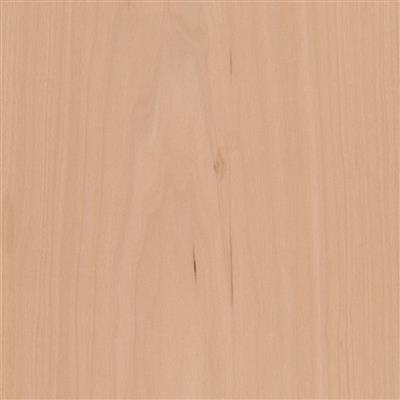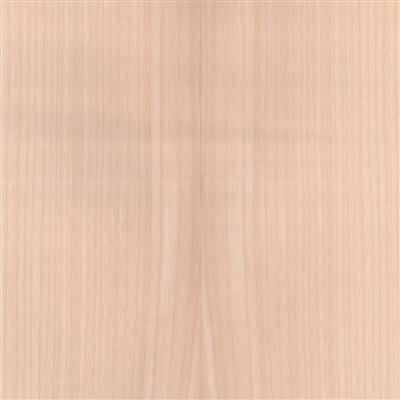Veneer Weathered Sycamore steamed 0.56 mm
The Norway maple is very similar in colour to the sycamore maple, but is somewhat darker and slightly pinkish when the wood is steamed. Moreover, brown heart is more common here. This maple is found in the plains of almost all of Europe.
Trade names and other names
Abbreviation DIN EN 13556: ACPL
Botanical name: Acer platanoides
German: Spitzahorn, pointed-leaved maple, Fladerbaum, Norwegian maple
English: norway maple, european maple, bosnian maple
French: érable plane, érable platane, faux sycomore, érable de norvège, main découpée
Italian: acero platano, acero platanoide, acero riccio, falso sicomoro
Spanish: el arce real, arce de noruega, arce norugo
Portuguese: sicômoro-bastardo
Dutch: noorse esdoorn
Technical wood properties
Weight fresh/green: 830 - 1040 kg/m³
Density air-dry (12-15% u): 640 - 710 kg/m³
Tensile strength: 101 - 112 N/mm²
Compressive strength: 64 - 71 N/mm²
Flexural strength: 126 - 140 N/mm²
Shear strength: 9 - 10 N/mm²
Hardness according to Brinell BII: n.a.
Hardness according to Brinell: n.a.
Differential shrinkage (radial): 0.10 - 0.20%
Differential shrinkage (tangential): 0.22 - 0.30%
Natural durability (DIN-EN 350-2): 5, not durable
Values of the technical properties of a wood species refer to a wood moisture content of u ≅12% to 15%. Data without guarantee.
Occurrence
Norway maple has the same distribution area in Europe as sycamore maple, but reaches as far north as Norway, but less far south. Norway maple grows more in the plains and also does not occur in closed stands.
Trunk and bark
The growth of the Norway maple reaches heights of up to about 20 m and diameters of up to about 90 cm. The stem is regular and well grown. The bark of Norway maple is not very thick, reddish-brown and longitudinally fissured, blackish when old. The bark of Norway maple is not very thick, reddish-brown and longitudinally fissured, blackish with age.
Characteristics and wood colour
The wood is somewhat more elastic, bendable and pressure-resistant than sycamore maple, but less durable. The wood of Norway maple is very similar in colour to sycamore maple, but slightly darker, although still lighter than that of field maple. In addition, brown heartwood is also more common.
Replacement woods
Pear unsteamed, pear steamed, wild service tree unsteamed, wild service tree steamed, alder
Literature
-Wood Atlas | 6th edition in 2006 | Rudi Wagenführ
-Wood science volume 1-3 | 1982 | Hans Heinrich Bosshard
-Properties and core sizes of wood species | 1989 | Jürgen Sell / Lignum Switzerland
| Category | Veneers |
| Product group | Veneers sliced |
| Thicknesses | 0.56 mm |
| Weight kg/m2 | 0.380 |
| Specie | Steamed Weathered Sycamore |
| Botanical name | Acer platanoides |
| Wood type | Hardwood |
| Main occurrence | Asia | Europe |
| Wood origin | Switzerland |
| Manufacturing/origin | Austria |
| Certification | not certified |
| Colour | orange brown |
| Hue | medium colour |
| Use | furniture | interior | musical instrument |
| Customs tariff number | 44089000 |
| Packaging | in bundle, approx. 24-32 sheets |
| Items on stock | yes |
| Date of delivery | approx. 3 - 6 working days |
| Postal shipping | nein |

 Deutsch
Deutsch
 Français
Français
 Italiano
Italiano







